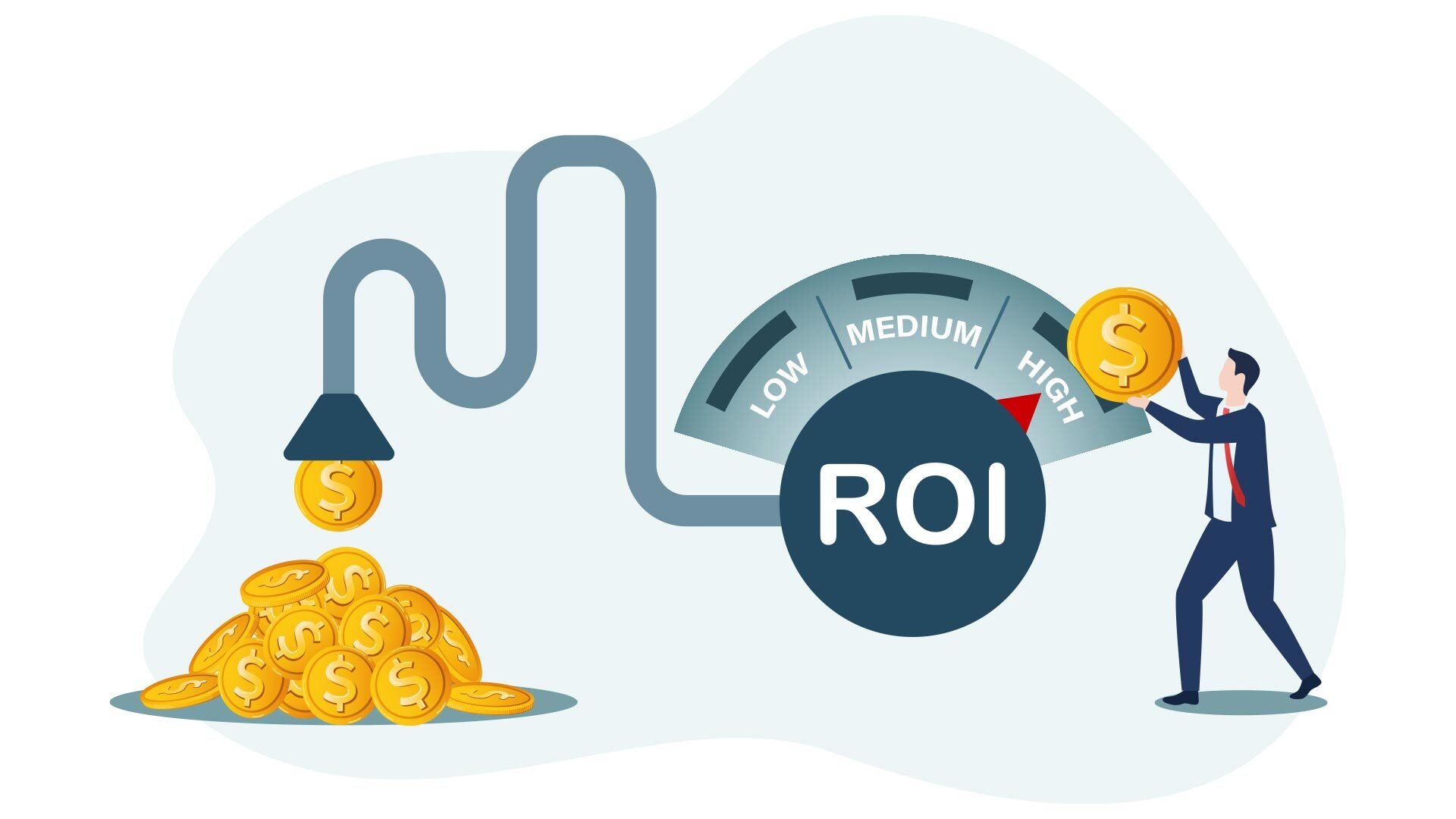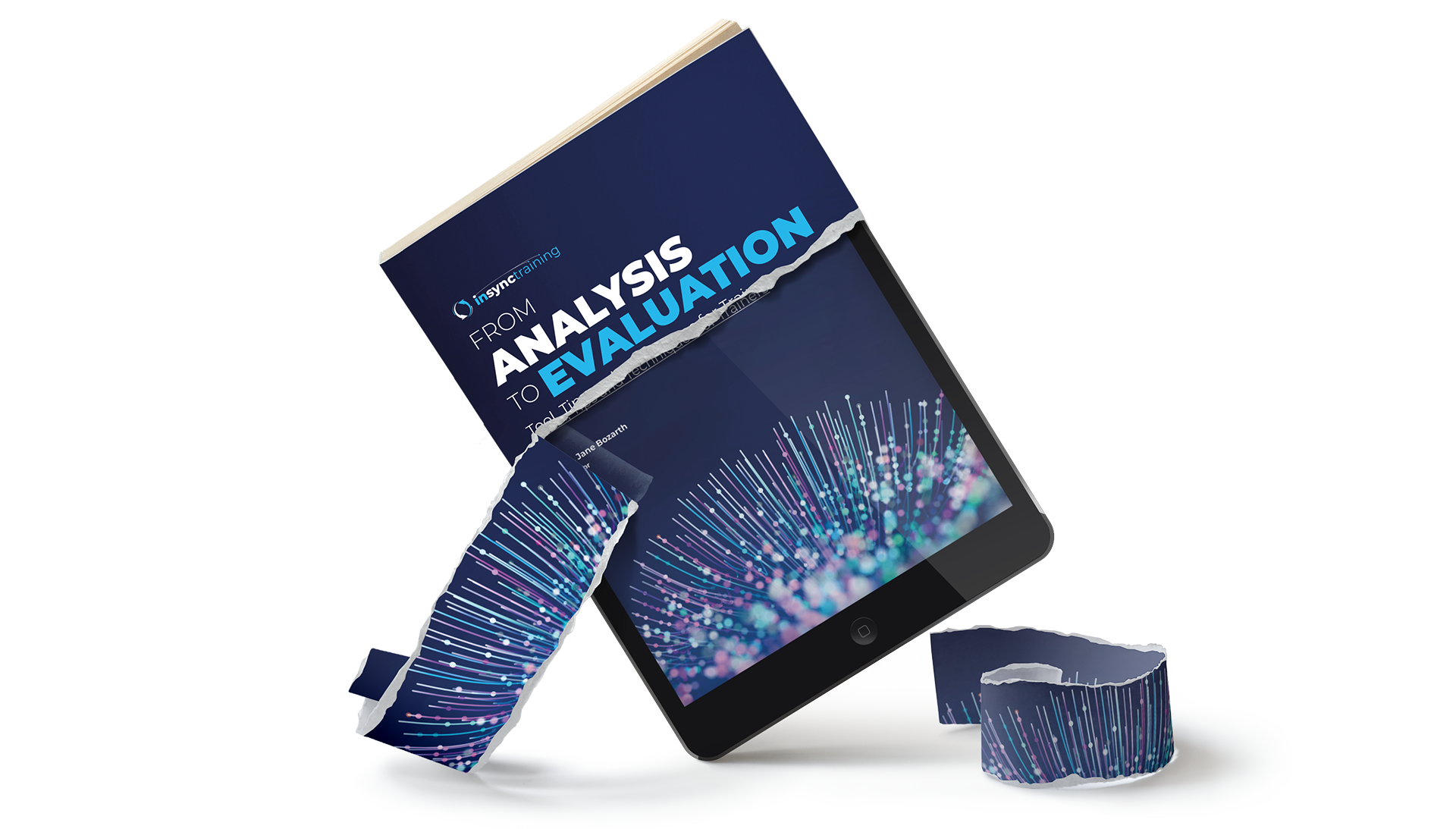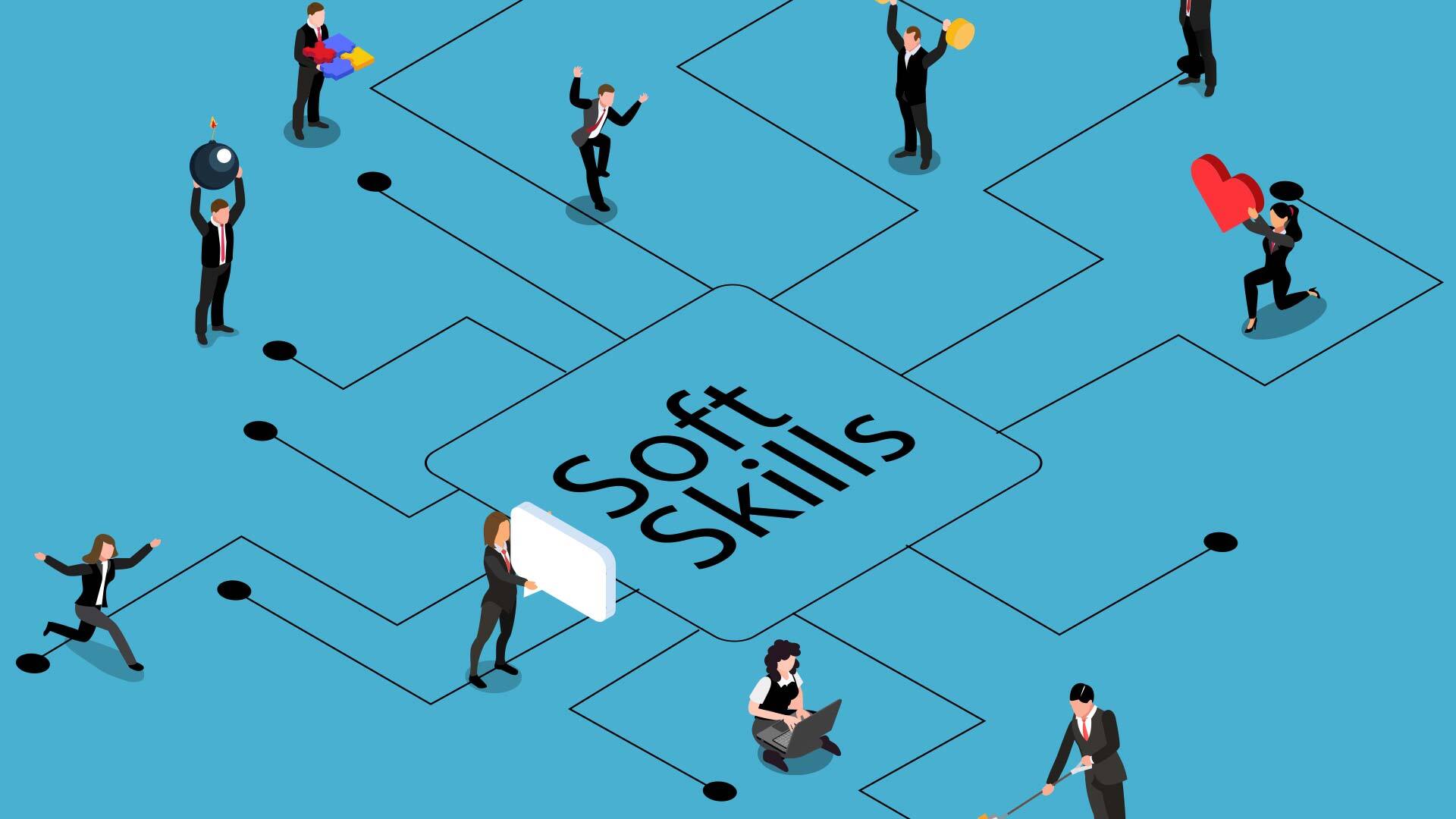4 min read
Measuring the Invisible: How to Prove Soft Skills Drive ROI
 Karen Vieth
:
Jun 23, 2025 8:00:00 AM
Karen Vieth
:
Jun 23, 2025 8:00:00 AM

We once worked with a client who paused their leadership training because the data showed “no change.” But when we looked beyond quiz scores and completion rates, we saw the truth: managers were having better conversations, resolving conflict faster, and building trust in real time. The impact was there—it just wasn’t where they were looking.
Key Takeaways
- Behavior is measurable. You can’t assess empathy with a quiz—but you can observe and track how people behave.
- Hybrid learning needs new metrics. Traditional completion rates miss the mark. Feedback, reflection, and learner engagement tell a better story.
- Facilitators matter. They play a central role in observing behavior, guiding reflection, and reinforcing soft skill growth.
- Learner engagement reveals ROI. Active participation, emotional openness, and real-time application signal that soft skills are sticking.
Why ROI Feels Out of Reach in Soft Skills Training
Let’s be honest—most soft skills programs aren’t being cut because they don’t work. They’re being cut because there’s no proof they do.
Empathy, communication, and leadership don’t show up in completion rates or quiz scores. And that makes them hard to justify—especially when learning budgets are tight and stakeholders want something measurable.
We saw this firsthand with one global company. They paused their leadership development program after internal metrics showed “no change.” But once we helped them track feedback loops and observable behavior, a different story emerged: trust was up, conflict was down, and leaders were actually applying what they’d learned. The program was not only reinstated—it was scaled. (Curious how we did it—or want similar results in your organization? Let’s talk.)
In hybrid work, soft skills aren’t optional. But to keep them funded, we have to stop measuring them like hard skills. We have to show the link between learner engagement and long-term business results.
For more context, explore "Evaluating Hybrid and Virtual Learning... It’s Complicated", which unpacks why hybrid environments make ROI even harder to define—and why it’s still worth doing.
The Problem: Soft Skills Are Behavioral, Not Binary
Traditional learning metrics track content mastery, not behavior. But soft skills live in how people show up day to day:
- A facilitator pausing to check for clarity
- A manager using inclusive language in meetings
- A team member asking for feedback instead of avoiding it
These aren’t personality traits. They’re trainable behaviors. But you’ll miss them if you’re only looking at course completions.
If we stop asking, “Did they finish?” and start asking, “What changed after they did?”—that’s when the ROI becomes visible.
Three Ways to Measure Behavioral Skill Development
- Watch What People Do
Use rubrics to track behavior over time. Start with a few core goals:
- Are they asking more open-ended questions?
- Are they naming emotion instead of sidestepping it?
- Are they giving feedback instead of holding back?
Facilitators can observe this in the virtual classroom, where tone and timing are visible in real time.
- Let Feedback Tell the Story
Peer and 360° feedback isn’t just for performance reviews. It’s one of the most powerful indicators of growth in empathy, communication, and leadership. Look for the shift—not just what people say, but how they say it over time.
- Look at Engagement Differently
Participation, chat response, and debrief quality all tell you something. Are learners asking deeper questions? Offering more input? Reflecting with honesty?
These are signs of emotional and intellectual engagement—which means your soft skills training is working.
Tracking engagement this way also gives you early indicators of learning transfer and application.
Why Hybrid Learning Demands Better Measurement
In a physical room, it’s easier to “read the air.” Someone speaks up. Someone softens. You feel the energy shift.
In hybrid settings, that insight doesn’t disappear—it just hides. You need to design for it.
Soft skills training works in hybrid environments when:
- Reflection is baked into every session
- Learners get ongoing feedback—not just a smile sheet
- Facilitators can document and respond to behavior in real time
Virtual classrooms aren’t a limitation—they’re a lab. But only if you build the conditions for visibility and learner engagement.
Want help designing that kind of environment? Check out our Design Mastery Certification.
Building a Measurement Strategy for Soft Skills Training
If you want to prove ROI, you need a plan that captures what matters. Here’s a simple blueprint:
- Define success. Instead of “better communication,” say: “Managers will acknowledge emotion in one-on-ones.”
- Design with your facilitators. Don’t measure after the fact. Build it into the session—what to watch, what to ask, what to reflect on.
- Use hybrid tools. Chat transcripts, breakout reports, polls—they all show behavior and learner engagement patterns.
- Track the small wins. First time someone speaks up. First time they admit frustration. First time they ask, “How did that land?” That’s real growth.
Want a deeper look at how to evaluate instructional quality? Our blog on evaluating virtual instructional programs outlines how to assess learning design, facilitation, and learner engagement—before behavior even enters the equation.
Once the basics are in place, frameworks like the InQuire Engagement Framework® help turn that data into action.
The InQuire Engagement Framework®: Making Engagement Measurable
At InSync, we use the InQuire Engagement Framework® to design programs that support visible, measurable growth. It looks at engagement across three dimensions:
- Emotional: Do learners show vulnerability, curiosity, and trust?
- Environmental: Are they navigating hybrid tools and spaces effectively?
- Intellectual: Are they engaging with real-world complexity, reflection, and challenge?
When learner engagement grows across these layers, you’re not just checking boxes. You’re changing behavior.
Read more in "Nurturing Emotional Engagement in the Virtual Classroom"
Case Snapshot: What ROI Looks Like in Action
One of our clients—a global telecom leader—had a problem. Technically strong managers were struggling to build trust. Team conflicts were dragging out. Feedback loops were broken.
Over six weeks, we delivered a virtual leadership program that combined:
- Scenario-based practice
- Peer feedback loops
- Facilitator observation and rubrics
Leaders reflected between sessions. They got targeted feedback. And they practiced behaviors that felt awkward at first—but became second nature.
Results?
- 42% increase in peer feedback scores around listening and empathy
- 25% more participation in virtual meetings
- A sharp drop in passive-aggressive email behaviors (yes, internal audits track that)
Behind those numbers was a deeper shift: learner engagement went up. When people feel safe enough to practice new behaviors, ROI follows.
No final quiz. Just real change. That’s ROI.
Final Thoughts: If You Want ROI, Measure What Matters
Soft skills training doesn’t fall short because the content is weak. It falls short because we don’t show what it changes.
You can fix that.
Start tracking behavior. Build in reflection. Let facilitators observe and guide. Let learners apply what they’re learning—and notice what’s shifting.
You don’t need a perfect score. You need proof of progress.
And learner engagement—when tracked and supported—is one of your clearest signals that growth is happening.
That’s how soft skills become success skills.
Ready to Make the Invisible Visible?
Not sure where to start? Our Top 4 Recommendations for evaluating virtual learning can help you start small—and scale what works.
Or better yet, join the Evaluating Hybrid & Virtual Learning Workshop to build your strategy—and see the change take shape.

InSync Launches Digital Edition of Dr. Bozarth's Seminal Training Book
Portsmouth, NH – July 2, 2024 InSync Training announces the re-issue of Dr. Jane Bozarth's highly acclaimed 2008 book, "From Analysis to Evaluation:...

